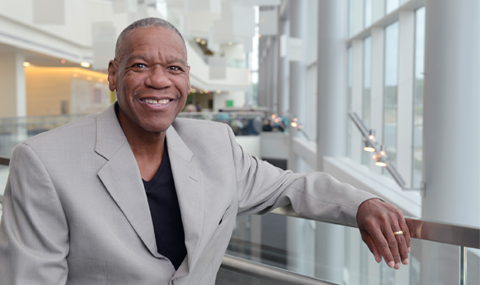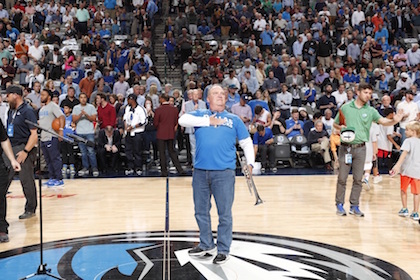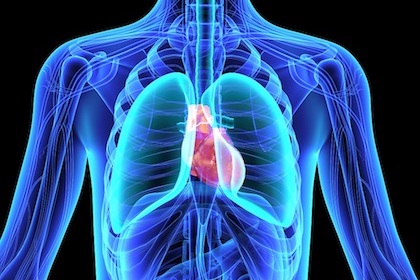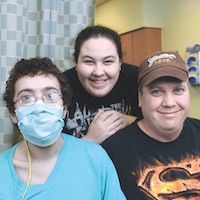Pulmonary Hypertension Program accreditation recognizes UTSW’s role in research and treatment advances

When Derrik Neal was first diagnosed with idiopathic pulmonary hypertension, he learned that life expectancy for the condition was just five years and it was unlikely that he would see his twin second-graders finish school.
That was 17 years ago.
Thanks to development of new medications and treatment at one of the top pulmonary hypertension centers in the country, Mr. Neal not only was able to see his children graduate and move out into the world, but he has continued to work and lead an active life, including swing dancing on Tuesday nights.
In 2015, UT Southwestern Medical Center’s Pulmonary Hypertension Program became one of the first medical centers in the country and the only one in Texas to complete the Pulmonary Hypertension Association’s new accreditation program. Essential to that accreditation was the role that UT Southwestern researchers played in the development of several new drugs for treating pulmonary hypertension, a condition in which blood vessels in the lungs become blocked or damaged, making it harder for blood to flow through the lungs to pick up oxygen.
“An accredited Pulmonary Hypertension Care Center is not just an institution that treats patients who have pulmonary hypertension. You have to be at the forefront of treatment, as well as being involved in clinical trials and moving the field forward,” said Dr. Fernando Torres, Professor of Internal Medicine, who developed UT Southwestern’s Pulmonary Hypertension Program 15 years ago.
UT Southwestern is the only medical center in North Texas that offers National Institutes of Health- and industry-sponsored pulmonary hypertension clinical trials. Idiopathic pulmonary hypertension – a type in which the underlying cause is unknown – was untreatable until the late 1990s. That’s when the first drug, an intravenous medication, was approved.
“The first oral medication was approved in November 2001, and now we are up to seven oral, two inhaled, and two intravenous medications,” said Dr. Kelly Chin, Associate Professor of Internal Medicine and Director of UT Southwestern’s Pulmonary Hypertension Program. “UT Southwestern was involved in key clinical trials during the development of six of these medications.”
UT Southwestern continues to be involved in clinical trials to find new drugs to treat pulmonary hypertension, including a trial for a drug called selexipag, the first oral prostacyclin to show long-term improvements. Dr. Jarett Berry, Associate Professor of Internal Medicine and Clinical Sciences, and colleagues recently published a paper on the benefits of exercise for pulmonary hypertension patients.
The UT Southwestern program is one of the largest in the country, assessing 250 to 300 new patients each year, said Dr. Chin. The program is the largest referral center in the area by patient volume and it ranks among the top 10 pulmonary hypertension centers by volume in the country. This year, the program expanded its reach with one-time consultation clinics in Tyler, Amarillo, Lubbock, El Paso, Midland-Odessa, and Fort Worth.
Pulmonary hypertension can have many causes, including heart problems and lung diseases like emphysema. “The key to treatment is accurate diagnosis of the cause,” said Dr. Chin. “Most patients come to us not knowing what type of pulmonary hypertension they have, and treatment is very dependent on type.”
Idiopathic pulmonary hypertension, the kind Mr. Neal has, is rare. “While it’s still a serious condition, many people improve and feel a lot better. It’s certainly treatable and patients can achieve a significant improvement in quality of life with today’s medications,” said Dr. Chin.
That’s something Mr. Neal can affirm, especially on Tuesday nights, when he’s out on the dance floor doing the East Coast Swing.




